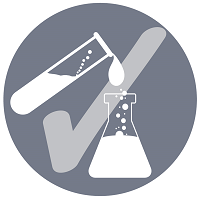Formulation and Delivery
Rapid Fires: Enabling Technologies and Materials for Formulation Innovation 1
Protein-Surfactant Interactions at Solid-Liquid Interfaces of Primary Packaging Materials
Tuesday, November 11, 2025
3:30 PM - 3:45 PM CT
Location: Stars at Night B1

Felicitas Guth, PhD (she/her/hers)
Head of Development, Pharma Solutions
BASF SE
Ludwigshafen am rhein, Rheinland-Pfalz, Germany
Rapid Fire Speaker(s)
Recent advancements in biotherapeutics underscore the importance of primary packaging materials and surfactants in formulations to ensure stability and safety. The current toolbox of stabilizing surfactants in biopharmaceutical formulations remains limited, predominantly comprising polysorbate 20, polysorbate 80, and poloxamer 188. To explore alternative stabilizers, a study was conducted to shed light on the effectiveness of a panel of nonionic surfactants, focusing on their interactions with antibodies at the liquid-solid interface of various packaging materials, including type I glass, baked-on siliconized glass, and cyclic-olefin polymer vials. The impact on protein aggregation and subvisible particle formation was investigated using micro-flow imaging (MFI) and orthogonal methods under agitation stress and quiescent storage conditions. Additionally, the adsorption behavior of surfactants and their protective roles against protein adsorption were characterized using quartz crystal microbalance (QCM). The findings elucidate dynamics between surfactants, proteins, and primary packaging materials, providing insights for the formulation of stable biopharmaceutical products.
Learning Objectives:
- Upon completions, participants will understand that the primary packaging material should be considered when investigating protein-surfactant interactions at solid-liquid interfaces. This can be important to select the optimal formulation


